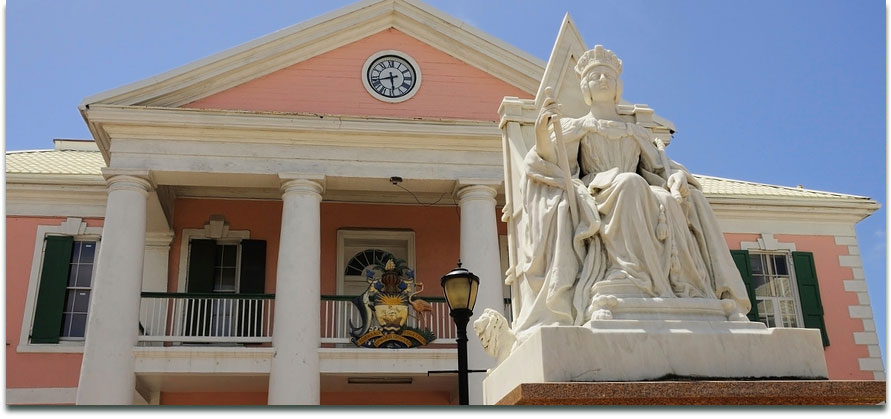

|
|
A brief history From tribal Indians to pirates, from explorers to slave traders, the Bahamas are steeped in centuries of rich and fascinating history. In fact, a stromatolite limestone reef on the eastern shore of Exuma is considered the oldest evidence of life on earth! The Siboney Indians, the first known residents of the Bahamas, survived here about 7,000 years ago on conch and fishing. Sometime after the Siboneys disappeared, the Arawak Indians, also called Lucayans, migrated to the islands from the Amazon region of South America. The Lucayans were prosperous and plentiful, with an estimated population of around 40,000 by the late 15th century. Most historians believe they developed an advanced political and social structure and lived in well-organized cities. But shortly after Christopher Columbus arrived in 1492, they were rapidly exterminated by the Spanish, and as a result, little is known about them. When Columbus “discovered” the Bahamas, he sailed through the narrow Crooked Island Passage down the leeward side of the islands. This major shipping thoroughfare eventually became so popular that it also attracted pirates and buccaneers, who found the shallow waters and numerous sandbars to be an ideal setting for attacking unwary ships. Hundreds of secluded cays and islets allowed marauding ships to lie in wait and pounce on unwitting prey sailing by.
Spanish conquistadors, having plundered South and Central America, had their treasure-laden galleons overtaken by pirates as they came through the islands on their way home to Europe.
But pirates weren’t the only ones having their way with passing ships. The people of Abacos survived for years by pillaging ships that were unfortunate enough to wreck off the shores of the islands. In fact, the waters off these islands are said to be the final resting place for nearly 500 Spanish galleons! Unfortunately, the wrecks weren’t always caused by storms; the islanders often helped guide passing ships to their doom by swinging lanterns at night off the treacherous reefs and sandbars.
By 1700, Nassau was actually ruled by pirates, who chased off most of the law-abiding citizens. Edward Teach, the notorious Blackbeard, commandeered Fort Nassau as his residence and spent his time infuriating the British Royal Navy. Finally in 1718, the British appointed a former privateer, Woodes Rogers, to be Royal Governor of Nassau. He offered pardons to all pirates who agreed to cease their operations except for Blackbeard, Charles Vane, and eight other swashbucklers. Blackbeard and Vane escaped, but Blackbeard was later killed in June 1718 off the coast of Virginia.
American Loyalists began to settle in the Bahamas in the late 18th century, bringing with them slaves and money to start a cotton industry. By the beginning of the 19th century more than 40 plantations were thriving, employing over 1200 slaves. When cotton growing became uneconomical, the islanders turned to diving for sponges, until the sponges were wiped out by a fungus. The people then turned to fishing and simple farming, which is still how they earn their living today.
Records from West End, the oldest city on Grand Bahama Island, show that the population in 1836 was only about 370, many of whom abandoned the island for greater opportunities in Nassau. But in 1861 people flocked back to Grand Bahama because of an unexpected economic opportunity—the American Civil War. At the outbreak of the war, with the Confederacy of Southern States under a strict Union embargo, smugglers operating out of West End were able to command hefty prices from the South for goods such as cotton, sugar, and weapons. As soon as the war ended, the economic boom ended as well, but it established strong ties between the Bahamas and the United States that still exist.
A second smuggling boom came a few decades later when the 14th Amendment prohibited alcohol in the United States. Warehouses, distilleries, bars, and supply stores sprang up all over West End, and the town’s smugglers developed a foolproof operation. They’d sail off at night, dragging huge cylinders of liquor tied to ropes behind them. If the American Coast Guard spotted them, the smugglers simply cut the ropes and waited for the patrol boats to leave. Then they recovered the cylinders and continued on their journey. Eventually prohibition ended, the economy did another nosedive, and people started fishing again.
Each island of the Bahamas has its own story that contributes to the fabric of the islands’ history. On Cat Island, once home to numerous cotton plantations established in the 1700s, visitors can explore vine-covered, semi-ruined mansions and stone walls. Crumbling remnants of slave villages and artifacts in Arawak caves whisper of a life long past. Descendants of those early settlers live in the same towns their ancestors helped establish. Pinder’s Point was once actually four separate towns, each named after a white settler who owned the land. Freed slaves took over the lands and passed them on to their descendants, and the four communities grew into each other. Williams Town was also founded by a freed slave, and some of his descendants still live there. Freetown, a village given its name because it was the first place that slaves were freed in 1834, is now just a cemetery and some rubble.
The people of the Bahamas celebrate their colorful history in many ways including exhibits, guided tours, and annual festivals. Although their ancestors were brought here as slaves to work on the plantations, the sting of oppression has vanished through the years along with the past. Bahamians are proud of their ownership of the land, and they welcome visitors to come explore and learn about the people and events that helped shape the islands of the Bahamas into the fascinating place they call home.
|